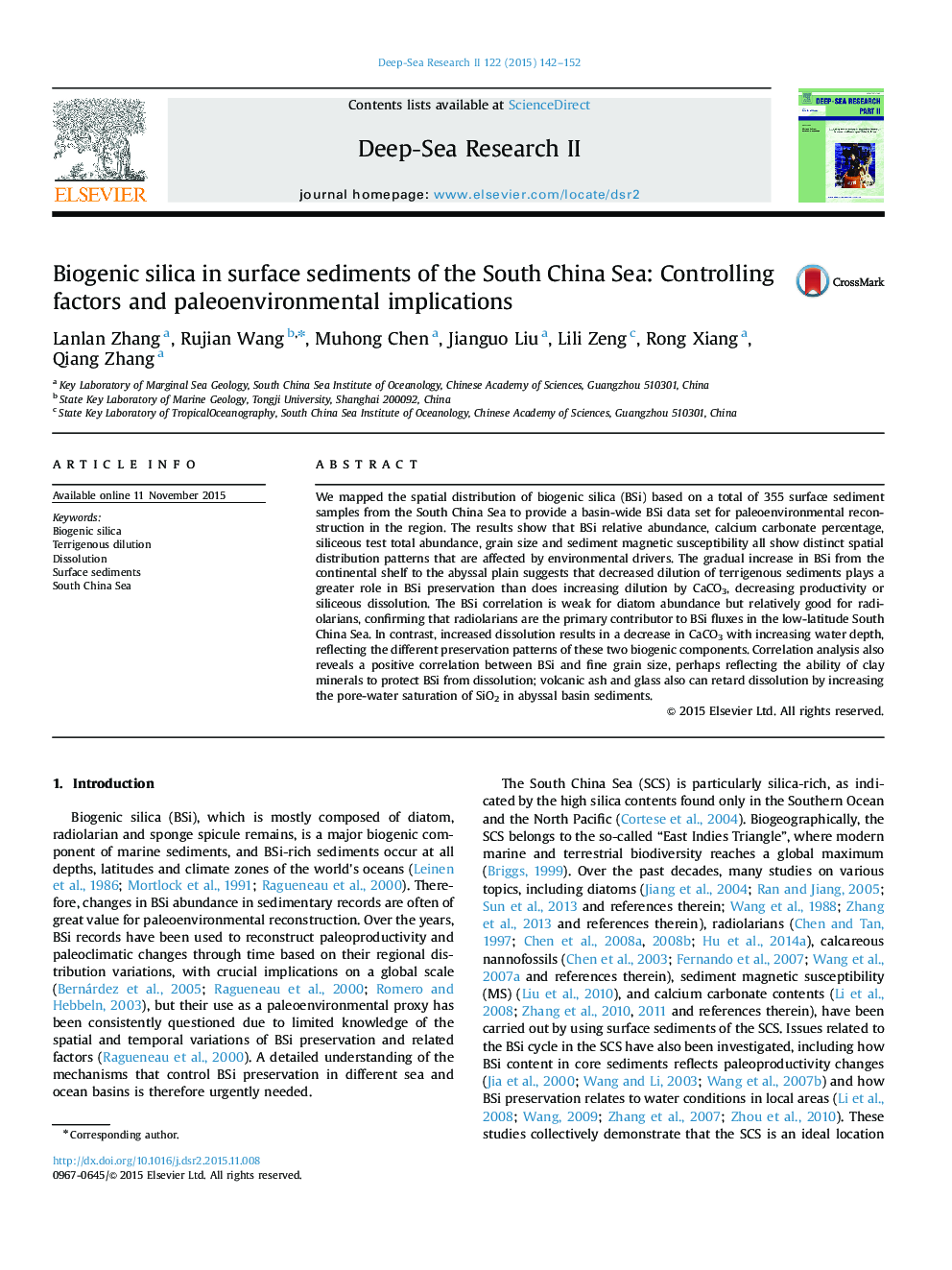| Article ID | Journal | Published Year | Pages | File Type |
|---|---|---|---|---|
| 4536167 | Deep Sea Research Part II: Topical Studies in Oceanography | 2015 | 11 Pages |
We mapped the spatial distribution of biogenic silica (BSi) based on a total of 355 surface sediment samples from the South China Sea to provide a basin-wide BSi data set for paleoenvironmental reconstruction in the region. The results show that BSi relative abundance, calcium carbonate percentage, siliceous test total abundance, grain size and sediment magnetic susceptibility all show distinct spatial distribution patterns that are affected by environmental drivers. The gradual increase in BSi from the continental shelf to the abyssal plain suggests that decreased dilution of terrigenous sediments plays a greater role in BSi preservation than does increasing dilution by CaCO3, decreasing productivity or siliceous dissolution. The BSi correlation is weak for diatom abundance but relatively good for radiolarians, confirming that radiolarians are the primary contributor to BSi fluxes in the low-latitude South China Sea. In contrast, increased dissolution results in a decrease in CaCO3 with increasing water depth, reflecting the different preservation patterns of these two biogenic components. Correlation analysis also reveals a positive correlation between BSi and fine grain size, perhaps reflecting the ability of clay minerals to protect BSi from dissolution; volcanic ash and glass also can retard dissolution by increasing the pore-water saturation of SiO2 in abyssal basin sediments.
